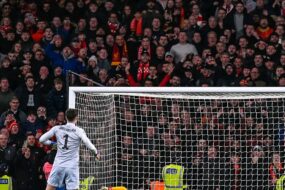
Stepping onto the pitch without the proper soccer equipment could put any player at a disadvantage. Whether you’re just starting out or already a seasoned pro on the soccer pitch, having the right equipment can make a world of difference in your performance. Beyond the physicality and strategic elements, soccer is also a game of precision, requiring high-quality equipment to pursue excellence.
In this comprehensive guide, we’ll take you through the essential soccer equipment that every player needs to excel on the pitch.
-
Soccer Ball
The heart of soccer lies in its primary equipment- the soccer ball. As a player, you might want to own at least one high-quality training ball. These balls generally have a synthetic cover, cotton and polyester linings for bounce-back ability, and a bladder for retaining air and shape. Training balls are often engineered to resist all types of weather conditions, ensuring your practice sessions are never hampered.
Remember, soccer balls come in different sizes for different age groups. For adults, a Size 5 ball, which is about 27 to 28 inches in circumference, is the standard. Meanwhile, for kids aged 8-12, a Size 4 ball is recommended. For the young children aged under 8, a Size 3 ball would suit best.

-
Soccer Cleats
The foundation of any soccer player’s gear is a reliable pair of soccer cleats. High-quality soccer shoes, also known as cleats, is the second most important piece of soccer equipment. Cleats are specially designed with studs on the bottom to enhance traction on the field. Depending on the type of surface you play on (hard, soft, or artificial turf), it is crucial to choose cleats that can best support your performance. Comfort, durability, and ball control should be your top priorities when deciding on the perfect pair.

-
Shin Guards
It’s essential to have a quality pair of shin guards because protecting your shins is non-negotiable in soccer. They’re not the most glamorous part of your soccer gear, but they protect one of the most vulnerable parts of your body on the field. No player should ever get on the pitch without them.
Invest in a pair of comfortable and durable shin guards that provide adequate coverage. There are various styles available, including slip-in guards and Strapped on guards, so find the one that offers the best fit for your needs.

- Strapped on guards
This type of guard usually has an elastic Velcro at the top that wraps around the leg and sometimes an extra Velcro at the bottom that also wraps around the leg to hold it in place. These guards will also usually have a padded material covering the ankles and a stirrup that goes underneath the foot. These guards are best suited for younger players and players who want extra protection.

- Slip-In Guards
They are lighter weight but very durable
They do not have any Velcro straps
They usually have a compression sleeve that is worn on your bare skin that is then slipped into the shin guard and a sock is put over the combo the sleeve is what secures in the guard
This guard is worn by older / more advanced players. It is more comfortable, lighter weight, and easier to put on and take off . It usually does not offer any ankle protection.

Image Credit: Soccer.com
If your guard has stirrups that go underneath your foot You should not wear it over your cleat. The rule of thumb for proper shin guard size is to have a minimum of 2-3 fingers length between the top of the guard and the bottom of your knee cap Most guards will have a height to size ratio on the back of the packaging
Size Total height
XS 3’11” – 4’6”
S 4’7” – 5’2”
M 5’3” – 5’9”
L 5’10” – 6’1”
XL 6’2” – 6’5”
XXL 6’5” +
-
Soccer Socks
let’s delve into something often overlooked- soccer socks. These are not just any ordinary socks. Soccer socks provide comfort, help to keep the shin guards in place, and most importantly, they prevent blisters. High-quality soccer socks can improve your stamina and reduce the chance of sustaining a foot injury, making them an essential part of any soccer player’s kit.

-
Soccer Jersey and Shorts
Dressing for success starts with the basics — a quality jersey and a pair of shorts. A good soccer jersey isn’t just about showing your team colors, it should be made from lightweight, sweat-wicking material to keep you cool and dry during a game. Pair with comfortable, flexible soccer shorts that don’t restrict movement and you’ve laid the foundation for a great game.


-
Goalkeeper Gloves (for Goalkeepers)
If you’re a goalkeeper, the Goalkeeper Gloves become your best ally. These gloves are designed to offer the best grip for handling the ball and provide ample protection to your hands from high-impact shots. Finding the right blend of comfort, grip, and protection is essential when picking these gloves. Remember, it’s not just about stopping the ball; it’s also about protecting your hands.

-
Training Cones and Agility Equipment
Your kit is important for providing the right support for your body during training, but how are you going to train at home without any equipment?
One essential piece of training equipment is the humble Training Cone. These simple, brightly colored cones are incredibly versatile, assisting with everything from agility drills to field practice. They’re an invaluable tool for improving precision, footwork, building speed and they can drastically improve your overall performance
![]()

-
Water Bottle for Hydration
Soccer is a physically demanding sport, and staying hydrated ensures sustainability and top-level performance throughout the game. Therefore, a good water bottle is mandatory for every game and practice.
Always have a water bottle on hand to ensure you can replenish fluids during breaks and stay at your best throughout the game.

-
Soccer Bag
Lastly, a sturdy, functional soccer bag is necessary to carry all your gear. It should be spacious enough to fit all your equipment and durable enough to withstand regular use. Some advanced soccer bags might even feature compartments to separate clean and dirty gear or secure pockets for your personal items.
Look for a bag with compartments for your cleats, water bottle, and other essentials.

Beyond the Basics
- Warm-up Wear
Listen to your muscles. They don’t like cold starts. Wearing a tracksuit or sweats before the game will keep you warm, prevent injuries and improve flexibility. Plus, you’ll look great doing it!
- The Recovery Routine
Soccer requires both physical and mental effort. Reward yourself with a good cool-down and stretching routine. Use a foam roller to massage stubborn knots. Don’t forget to change your sweat-drenched clothes for something comfy!
How Do You Maintain Soccer Equipment
Ensuring that your soccer equipment stays in top-notch condition is paramount. With the right mix of care and maintenance, your gear will not only last longer but will function optimally, enhancing your performance on the field.
Cleaning your soccer boots after each use can be an overlooked task but is vital. Soil and grit lodged in the cleats can wear down the shoe, reducing their effectiveness and lifespan. Rinse them under a tap, scrubbing off the dirt with a soft-bristled brush. Stuff with old newspaper to maintain shape and aid in drying – but avoid excessive heat, which can warp them out of shape.
Not forgetting the ever-important soccer ball, maintain its condition with a regular wipe down using a mild soap and cloth. Keep it inflated to the recommended pressure and avoid sitting or standing on it to keep its shape intact. Store it in a cool and dry place, away from direct sunlight and extreme temperature fluctuations, which can degrade the material or even alter the shape over time.
Lastly, don’t neglect those shin guards. Frequent washing is crucial considering the sweat they absorb. Hand-wash them using a mild detergent and warm water, then air dry. This process will not only rid them of odours but also prolong their effectiveness and durability. Remember, well-maintained equipment provides the best chance of success in any sport, and soccer is no exception. After all, as the saying goes, ‘look after your gear, and it’ll look after you!’.
The world of soccer equipment stretches far and wide, but these are the absolute essentials and owning the right equipment can significantly impact your overall soccer performance. A high-quality soccer ball and well-chosen cleats are indispensable to keep up with the game. Therefore, investing in the right gear is just as essential as refining your skills on the field. With this guide, you are now well-equipped to embark on your soccer journey, all ready for the cheers and challenges.








